BMW Art Guide by Independent Collectors
Dialogues in Nature
Chatsworth – Bakewell, Great Britain

It is rare that a contemporary art space lives up to the rhetoric of sustainability and uniqueness that frequently appears in press releases and profiles, but Chatsworth House, situated by the River Derwent in Derbyshire, is truly a special place. The House is more than a stately home, though it is that – since the sixteenth century it has been the residence of the Cavendish family – it is also an ecosystem joining contemporary aesthetics to the surrounding natural environment in fresh, but also deeply organic ways. The House sits at the foot of a gently sloping hill covered by trees that stretch back into a magnificently expansive parkland. At first glance, the natural beauty of the surroundings of Chatsworth House is almost overwhelming, but when one looks more closely, the care given to maintaining the delicate balance between the House and the surrounding ecology is even more humbling. Designed by such luminaries of British architecture and landscape design as Capability Brown, Sir Jeffrey Wyattville, and George London, the park is a marvelous, palimpsestic creation spanning centuries; this is a tradition that continues into the present, and finds expression in the present Duke of Devonshire’s passion for contemporary sculpture.
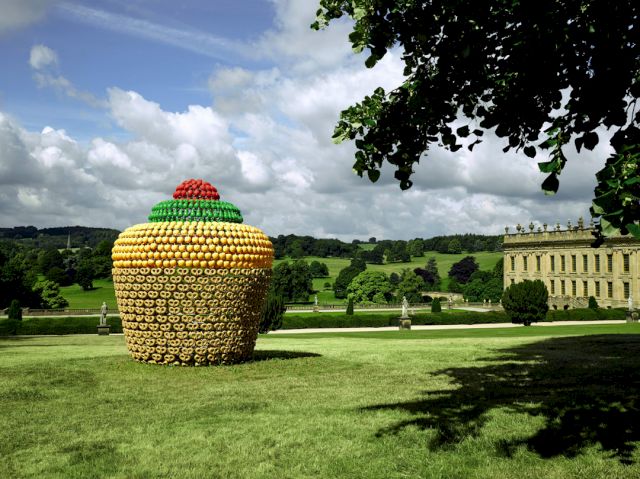
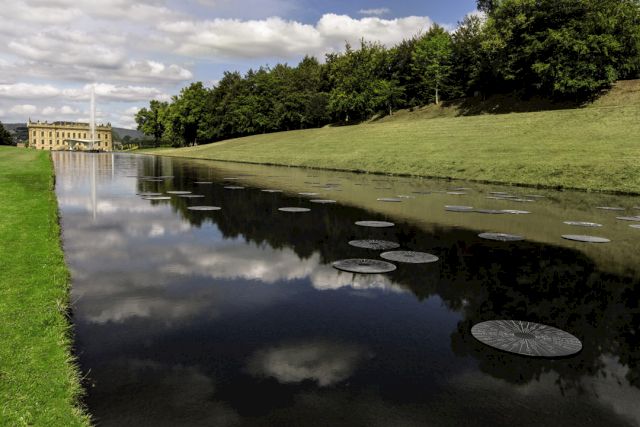
In the park, near a winding footpath are a series of sculptures collected and positioned as horse jumps. Works by contemporary British artists including Alison Crowther and the Pop provocateur, Allen Jones, serve, perhaps incongruously, as obstacles for eventing. This interweaving of contemporary art with horse trials may strike viewers accustomed to the preciousness and almost mystical treatment accorded to art objects in galleries as odd, but in the closely interwoven relational dynamics of Chatsworth House and its grounds, nothing could seem more natural or logical. Sculptures are present throughout Chatsworth House’s grounds as well as the interior of the home itself, and the House is currently hosting the “Beyond Limits” exhibition from Sotheby’s.
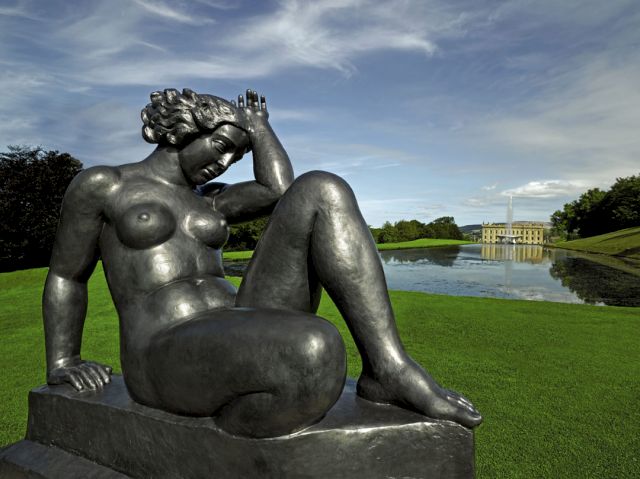
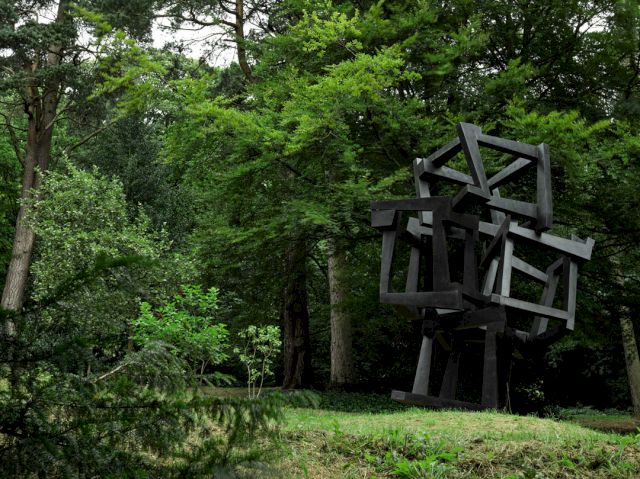
The trend toward showing contemporary art in stately homes throughout the UK can create something of a tug-of-war between aesthetics. The impulse to leave properties in pristine states can be powerful, not least as many visitors come to these sites to experience some form of connection with the past. At Chatsworth House, though, the characteristic attention to detail means that works like the late Zaha Hadid’s monumental “Lilas”, a trio of smooth, white structures gathered at the edge of Chatsworth House’s expansive, rectilinear pond – filled, for the length of the exhibition with Bruce Munro’s 108 stainless steel water lilies – feel natural enough to be almost vegetal. This connection is explicitly drawn in Cristina Iglesas’ work, “Habitatión Vegetal XV”. The work is a luxurious, mirrored structure through which the viewer can enter via corridors lined with organic material. Iglesias’ sculpture is as elegantly structured as the grounds on which it sits. Thus, the sculptures of “Beyond Limits” are part of the ongoing dialogue between Chatsworth House’s physicality and the intellectual curiosity and passions of its inhabitants. A trip to Derbyshire may feel at first like a journey into the past, but given the commitment of the Duke to ensure that the House does not become an artifact of a vanished and irrelevant form of cultural expression, it is instead a pointer in the direction of a more considered and potentially sustainable future both in terms of nature, and of ideas.
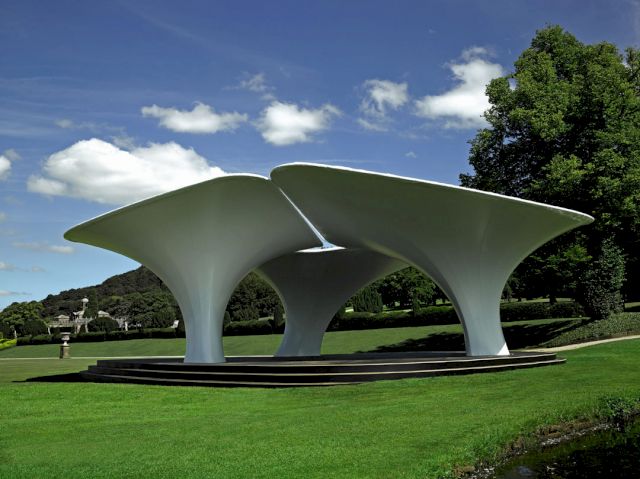
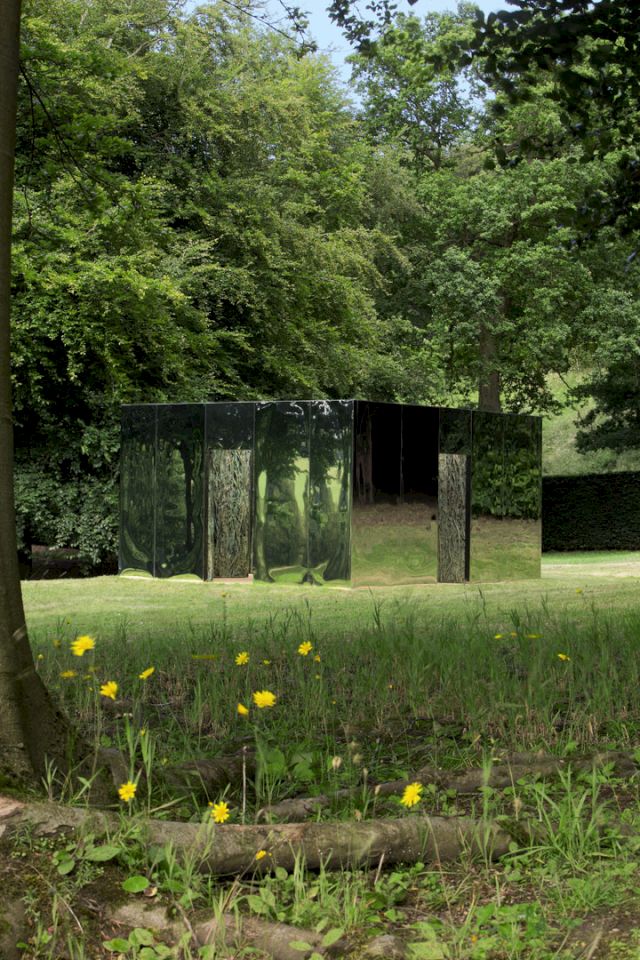
William Kherbek is the writer of the novel Ecology of Secrets (2013, Arcadia Missa) and the forthcoming UltraLife (2016, Arcadia Missa). His art journalism has appeared in a number of publications in the UK, US, Germany, Switzerland and Romania.
All images courtesy Chatsworth, Bakewell
More Information on Chatsworth